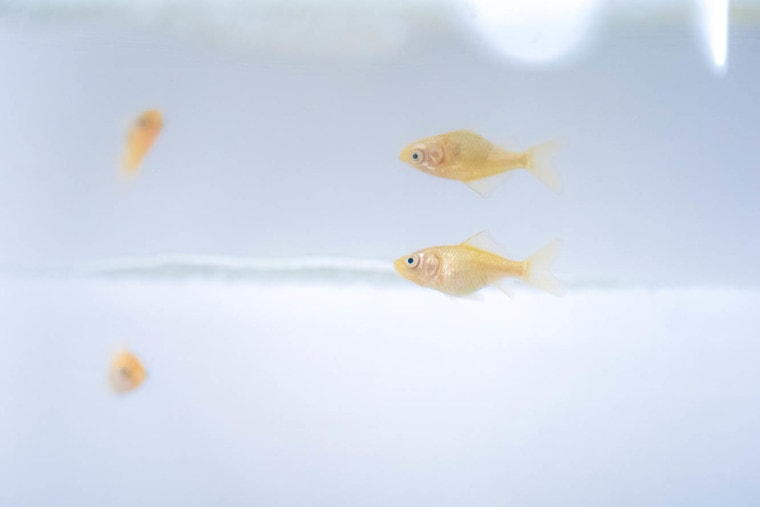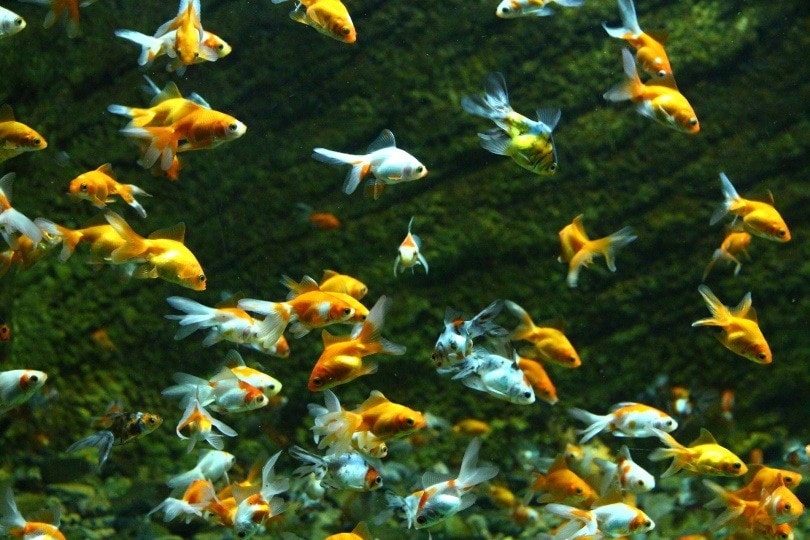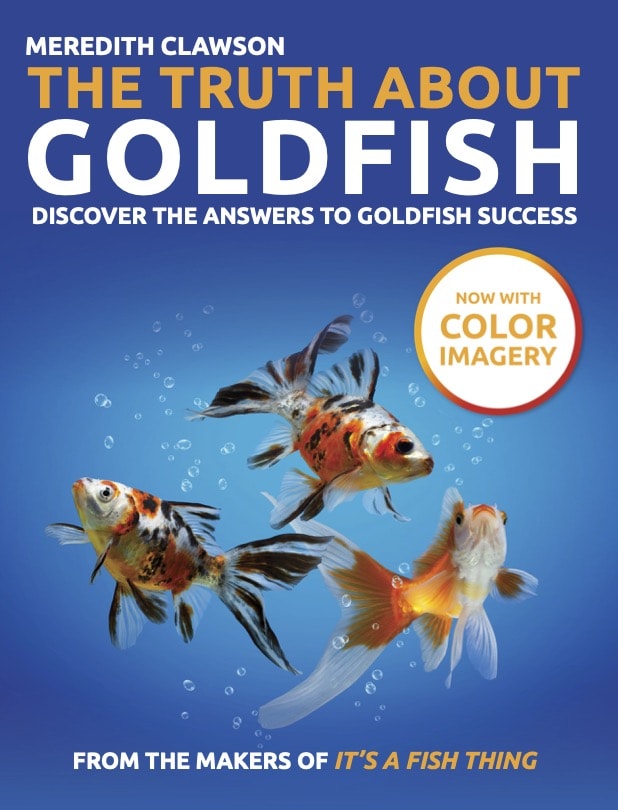How Often Should You Feed Goldfish Fry

If your goldfish are happy and healthy and you have a male and a female, then eventually, you'll end up with your goldfish spawning. After spawning, you may end up with baby goldfish, also called fry. Getting the eggs to safely make it to "fry" level does take some doing on your part, but once you have your little fry, you'll need to know exactly how to care for them to maximize their health and growth. Let's talk about raising goldfish fry!
Considerations Before You Have Fry

What are you going to do with a bunch of baby goldfish? Many people allow their goldfish to spawn and create fry without considering what they'll do with extra goldfish. Raising goldfish is not typically a profitable venture, so money should not be a driving factor in allowing your goldfish to reproduce. Keep in mind that goldfish can get quite large and produce a heavy bioload, so even a few extra goldfish can make tank care more difficult.
Goldfish can lay thousands of eggs in a single spawning session! Most of these eggs will not be fertilized, but you can still end up with dozens or hundreds of goldfish fry from a single breeding. If you don't have the space for additional goldfish, it may be in the best interest of the fish you already have to leave the eggs be and let nature take its course. You can also remove the eggs and dispose of them.
Caring for Eggs
So, your female laid eggs. Now what?
The first thing you should do is remove the eggs. Spawning mops, which can be plants or items like thread or yarn, can be added to the tank to catch the eggs. This will make it easier for you to remove the eggs from the tank and it will keep the eggs safe if you aren't present when the spawning occurs.
Whether you've set up a specific breeding tank or your goldfish are spawning in your main tank, the eggs should be separated from all other fish as soon as possible. Most fish will eat eggs, and this includes the parents. They will also eat fry, which are very tiny when they hatch. Allowing the eggs to stay in the tank with adult fish is risking losing some or all of the fry, unless you have excellent plant cover.
Housing Fry
Within 2-7 days, you will have baby goldfish beginning to hatch from their eggs. They typically spend the first two days hanging onto surfaces, so you're likely to see them hanging out on the tank walls. They usually won't eat during this period because they are still absorbing the nutrients from what is left of their egg. For the best chance at survival, provide your fry their own tank. A fully cycled tank is ideal because they are sensitive to poor water quality, so if you intend to raise fry, having a fry tank set up before spawning occurs is your best bet.
Your fry tank should be kept at a temperature of 70-75˚F for the best survival of eggs and fry. It should be well aerated, but the current should be gentle. Fry are not strong enough to fight a strong current. They also should not be kept with a regular filtration system as this is likely to suck them up. Provide your fry with a sponge filter or air stone. A sponge filter is ideal because it encourages colonization of beneficial bacteria to help maintain the water quality. Fry do not need a full tank setup like adult goldfish and things like décor and plants will just make tank care more difficult.
Feeding Fry
Goldfish fry are tiny and have tiny mouths to match. They should be fed fry food for at least the first few weeks of life. You can offer them commercial fry food, baby brine shrimp, infusoria, and some algae are all good food options for goldfish fry. After the first couple of weeks, you can begin offering slightly larger food options like daphnia and mosquito larvae. After the first two days of not feeding, you should begin offering food every 4 hours. This will support rapid growth and ensure all fry are getting enough to eat.
Many goldfish die as a result of improper feeding, diet, and/or portion sizes – which can be easily prevented by proper education.

That's why we recommend the best-selling book, The Truth About Goldfish , which covers everything about goldfish nutrition, tank maintenance, illnesses & more! Check it out on Amazon today.
Remove uneaten food after a few hours to prevent fouling the tank water. Your goldfish should be fed these nutrient-dense foods for the first six months of life to ensure rapid, proper growth. As they age, you can begin offering small pellets and other adult fish foods, but they should still have the option of live foods and other foods that stimulate growth and development.
Caring for the Fry Tank
You should perform 2-3 water changes of 25% every week to maintain water quality. Pre-treat new water before adding it to the tank since the fry will be extra sensitive to chlorine and contaminants. To perform water changes, you'll need to avoid typical gravel vacuums and anything that can suck up or otherwise harm your fry. Airline tubing can be used as a siphon to remove water and is a very safe option for water changes. You can also spot clean the tank with a turkey baster or syringe, sucking up only what is needed.
Remember, your fry are very tiny, so even with the utmost care, there's the potential to suck one up in your tubing, turkey baster, or syringe. When it comes to caring for a fry tank, never drain your water directly into a sink, bathtub, or anything that will immediately drain. Draining water into a bowl or bucket will allow you to inspect the water for stray fry before you dump the water. Ensure you remove dead fry, unfertilized eggs, and uneaten food when you perform tank cleanings.
Moving Fry
The main thing to consider before moving your fry from their baby tank to an adult tank is their size. If your fry are still small enough for the adults to eat them, then leave them in their fry tank until they are larger. They are usually ready to be moved around 6 months of age. When they are ready to be moved, you need to acclimate them to the new tank just like you would a new fish from the pet store. Moving them directly from tank to tank can lead to shock and death.
You can float them in a bag of their own tank water until the temperature adjusts, then poke small holes in the bag to allow for water exchange before you release them into the tank. Another option is to use drip acclimation before adding them to the main tank.
Culling
Culling is a conversation that many people don't want to have, but it is a necessary conversation when it comes to breeding your goldfish. Some fry may be deformed, injured, or otherwise unhealthy. If you have a fry that is suffering, it is cruel to let its suffering continue. Some people also find they need to cull their least desirable fry to help maintain the fish population they can manage. Remember that keeping too many fish and not being able to keep up the needs of the tank is cruel and may result in unnecessary illness and death.
To euthanize fry, you can put them in a small container or bag of tank water and a few drops of clove oil. Clove oil is a sedative and is often used by fish veterinarians as sedation. It will help your fry gently fall asleep without feeling any suffering. Sometimes, clove oil is enough to help them pass. If you are unsure if they have passed, you can put the container into the freezer. The clove oil will ensure they stay asleep through the whole process.

In Conclusion
Raising goldfish fry isn't for the faint of heart. It is hard work and can be full of heartbreak and difficult decisions. However, choosing to raise fry is a commitment to the health and wellness of your fish, and you are responsible for providing them with high-quality care. Carefully consider the pros and cons of raising fry before you attempt it to ensure you are ready to commit to the entire process.
Featured Image Credit: kjnk, Shutterstock
Source: https://petkeen.com/raising-goldfish-fry/
Belum ada Komentar untuk "How Often Should You Feed Goldfish Fry"
Posting Komentar